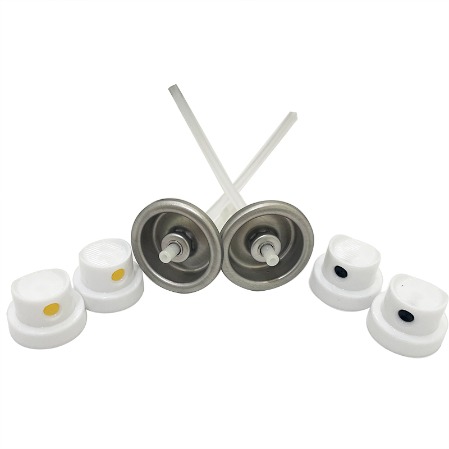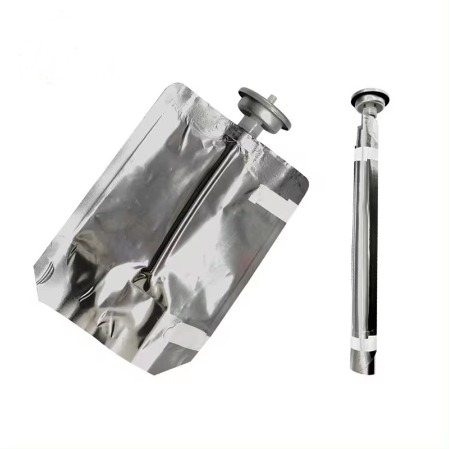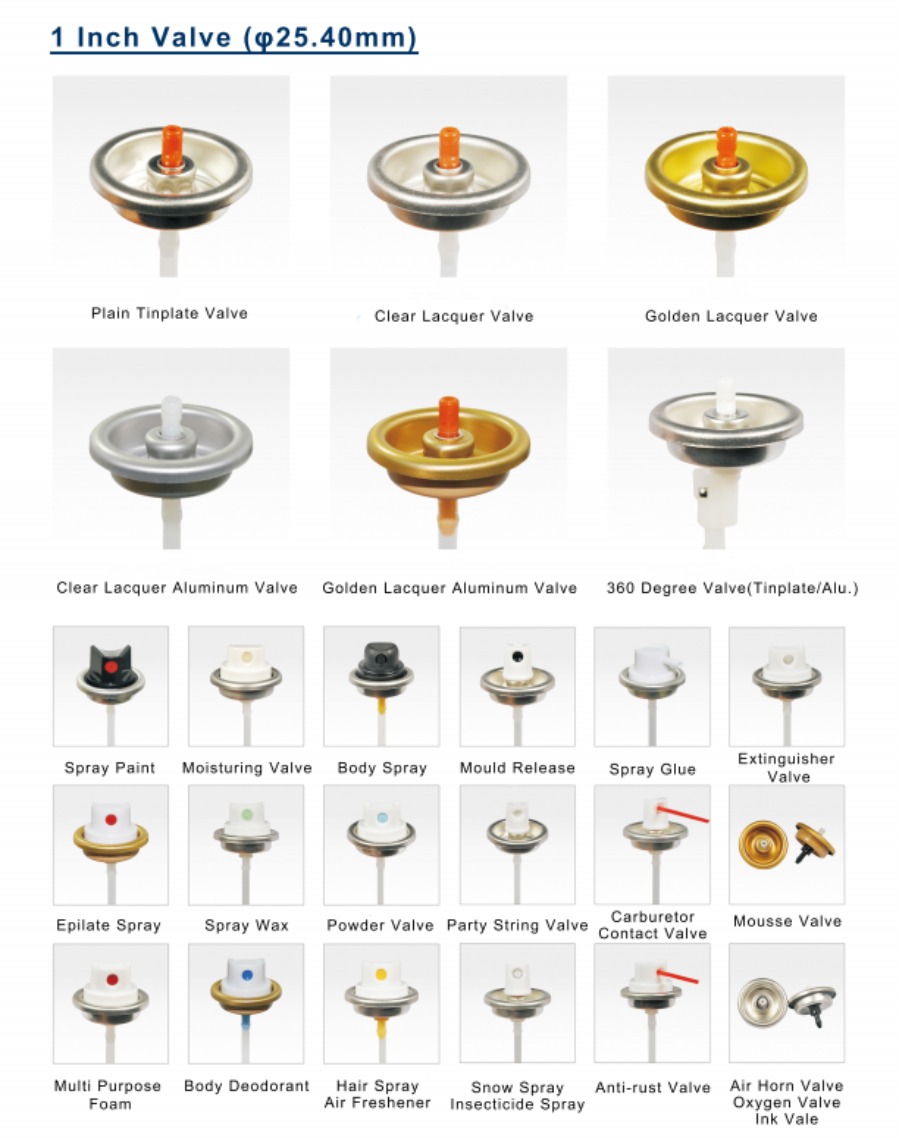Existem atualmente mais de 200 tipos de produtos em aerossol utilizados nas áreas pessoal, doméstica, industrial, agrícola, construção, proteção contra incêndio, segurança, medicina e outras.
O válvula de aerossol pode não parecer atraente, mas é de extrema importância em comparação com todo o produto em aerossol. Não afeta apenas o desempenho de vedação do produto, mas também o efeito de pulverização e, claro, a estabilidade de todo o produto em aerossol. Portanto, a escolha da válvula adequada merece a atenção de todos no processo de desenvolvimento de produtos em aerossol.
Se observarmos os tipos de válvulas, os aerossóis são divididos principalmente em duas categorias: embalagens de um componente e embalagens de dois componentes (BOV sistema). A estrutura principal de um aerossol yuan inclui: lata de aerossol corpo, válvula de aerossol, tampa externa, atuador, propelente e matérias-primas. Os principais resultados dos aerossóis binários incluem: lata de aerossol corpo, válvula de spray aerossol, camada extra de saco de alumínio, tampa externa, atuador, matérias-primas e gás comprimido.
As válvulas geralmente consistem em sete partes: copo de vedação, junta externa, junta interna, haste da válvula, mola, câmara da válvula, tubo de sucção, etc. Considerando diferentes materiais, tamanhos e estruturas, teoricamente, as válvulas podem apresentar bilhões de variações diferentes.
 |  |
Portanto, como escolher a válvula de pulverização apropriada requer uma consideração abrangente dos seguintes fatores:
Em primeiro lugar, é um monocomponente válvula ou uma válvula BOV?
A questão da compatibilidade precisa ser considerada ao misturar o material e o propulsor em um monocomponente formulação em aerossol. Quando tanto o propulsor como o conteúdo são pulverizados simultaneamente, é fácil produzir uma situação em que o propulsor já foi pulverizado enquanto o material permanece, o que afecta a experiência do consumidor. Não pode ser usado 360 graus, só pode ser usado na vertical ou de cabeça para baixo. Propelentes voláteis (como butano ou éter dimetílico) têm um aumento geométrico de pressão com a temperatura e são classificados como materiais perigosos com requisitos rigorosos para condições de transporte e armazenamento.
Sem considerar fatores de custo, as válvulas BOV apresentam muitas vantagens, como:
O conteúdo não entra em contato direto com a lata aerossol, proporcionando proteção à matéria-prima;
Pulverizar em todas as direções para se adaptar aos diversos cenários de consumo;
Antes do enchimento, o saco valvulado pode ser aspirado ou desinfetado por irradiação de cobalto 60. A fórmula pode reduzir conservantes e alérgenos;
A pressão dentro do tanque é constante, a pulverização é estável e o material residual é baixo;
Usando ar comprimido ou nitrogênio, a pressão permanece quase constante com o aumento da temperatura e os requisitos de transporte e armazenamento são relativamente baixos.
Em segundo lugar, a escolha do material para o copo de vedação?
A espessura dos copos de folha-de-flandres é geralmente de 0,27 mm e a espessura dos copos de alumínio é geralmente de 0,42 mm. A aplicação na área de produtos de higiene pessoal costuma utilizar copos de alumínio, que são mais estáveis e menos propensos a enferrujar. A estabilidade de tamanho do copo de folha-de-flandres é melhor e não é facilmente afetada pelo corpo da lata de aerossol ou pelo processo de vedação;
Em terceiro lugar, o material da junta
As juntas são geralmente divididas em juntas internas e juntas externas, com vários materiais, incluindo butil, cloropreno, butil, clorobutil, nitrila, cloropreno, poliuretano e assim por diante. O encolhimento da junta afetará o encaixe entre a haste da válvula e a junta, às vezes causando vazamento. Se a junta se expandir excessivamente, o orifício da haste da válvula da junta não poderá ser exposto ao pressionar o bico, o que afetará a eficiência da pulverização. Após repetidos experimentos, uma mistura de 75% de etanol e 25% de isopentano foi usada para testes de ouro, e as melhores escolhas foram borracha de cloropreno (NEOPRENE) e borracha de butadieno sódico (BUNA), que eram relativamente estáveis.
Quarto: Orifício da haste da válvula
Os tamanhos comuns incluem 0,35, 0,4, 0,46, 0,51 e 0,61 mm, e o número de orifícios da haste da válvula é um dos fatores determinantes para a taxa de ejeção. Existem também diferentes séries de orifícios de ar da haste da válvula, incluindo 1, 2, 4, 6 e até 8 orifícios.
Quinto: Orifício lateral da válvula
O orifício lateral da fase gasosa está localizado no alojamento da válvula e está localizado no interior após a válvula ser vedada. É usado principalmente para aumentar o efeito de atomização, aumentar a estabilidade da pulverização de conteúdo para alguns produtos em pó e aumentar a pulverização de produtos de alta viscosidade. Existem designs de furo único e de furo duplo.
Sexto: comprimento do tubo de imersão
Na configuração inicial, o comprimento da válvula pode ser calculado como a altura total da lata de aerossol menos o valor definido. Em seguida, através de testes de compatibilidade, confirme o grau de encolhimento do tubo de imersão no produto, e o comprimento final da válvula deve ser tal que a parte inferior do tubo de imersão esteja no terço inferior do semicírculo na parte inferior do pode depois de imersão e estabilização.
Considerando que o tubo de imersão tem uma taxa de expansão de 3 a 6%, é crucial confirmar o comprimento após o teste de compatibilidade. Claro, um desenho de palha com cortes oblíquos também pode ser um pouco útil.
Emparelhado com botões apropriados, a válvula de aerossol selecionada pode transmitir as características do aerossol aos consumidores. Como solução de embalagem para produtos complexos, são necessários testes de compatibilidade e estabilidade para projetar produtos impressionantes!
